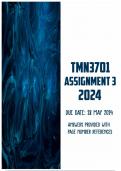, PLEASE USE THIS DOCUMENT AS A GUIDE TO ANSWER YOUR ASSIGNMENT
Please note that the author of this document will not responsibility for any plagiarizing you
commit.
Question 1
1.1. Explain the significant role of input, interaction and output in the context of additional
language teaching. Provide examples to support your answer.
Input
Input refers to the language that learners are exposed to, such as reading or listening to
comprehensible language. For example, providing learners with texts in the target language (e.g.,
English) to read and understand, which engages their listening and reading skills, constitutes as
providing comprehensible input.
Interaction
Interaction is essential as it provides opportunities for students to engage in conversations,
discussions, and role-plays in the target language. For instance, learners can interact and role-play
scenarios like ordering food in a restaurant, which helps in developing sentence patterns and
language structures.
Output
This refers to the language that learners produce, such as speaking and writing. When learners
produce comprehensible output, their language acquisition is facilitated. For example, learners can
engage in group work, discussions, and presentations, which provide opportunities for them to
produce language output.
In summary, input, interaction, and output are essential components of additional language teaching
as they provide learners with exposure to the language, opportunities to engage in meaningful
conversations, and chances to produce language output, all of which are crucial for language
acquisition. (Study Guide - Page 16)
1.2. Highlight the potential challenges teachers might face when implementing input, interaction
and output in the classroom and provide strategies to overcome these challenges.
Implementing input, interaction, and output in the classroom can pose several challenges for
teachers.
Here are some potential challenges and strategies to overcome them:
Challenges:
Limited class time for interaction and output activities.
Varied proficiency levels among students.
Lack of motivation among students to engage in language output activities.
Strategies to Overcome the Challenges:
Maximizing Class Time: Utilize group work and pair activities to maximize interaction and
output within the given class time. This allows students to engage in meaningful conversations
and produce language output in a collaborative setting.




